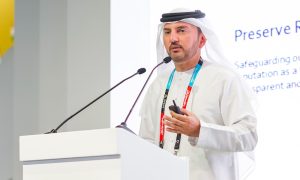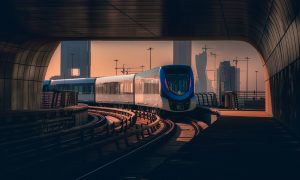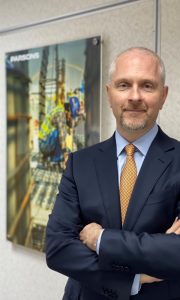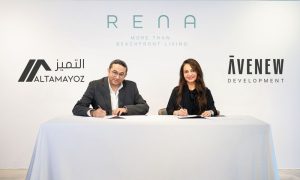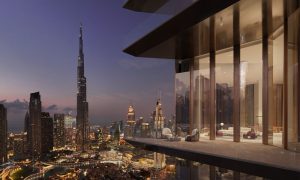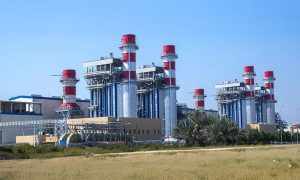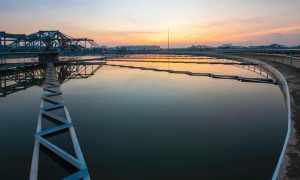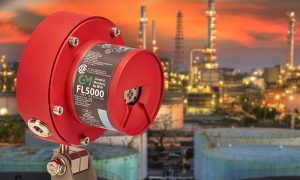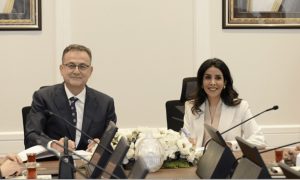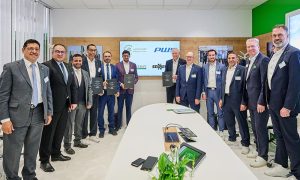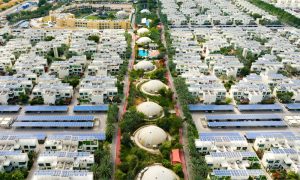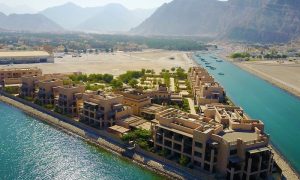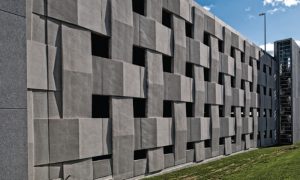Speeding forwards: Interview with Virgin Hyperloop One’s Harj Dhaliwal
Harj Dhaliwal, managing director – ME and India, Virgin Hyperloop One, on how it can unlock the potential of the Middle East

In January, Virgin Hyperloop One (VHO), an American transportation technology company, created a stir in local and international media when it announced that its system can be powered completely off-grid in the Middle East, with zero direct emissions. In a statement made ahead of the World Future Energy Summit and during its participation at Abu Dhabi Sustainability Week, the company said that it was possible to leverage solar panels that would cover the tube, to power a zero-emission network that is energy-neutral and completely unplugged from the grid in the Middle East.
With cities around the world feeling the impact of climate change, viable solutions are needed, with transportation one of the major areas that need to be addressed. Despite the urgency, little progress has been made since the introduction of railway and commercial travel, the company says.
It explains that VHO is committed to a “massive leap forward” which will offset the impact of vehicle, train and air travel in a manner that no current technology can achieve, with the company highlighting that per passenger, the hyperloop is vastly more efficient than conventional means of transport.
Furthermore, VHO’s clean energy solution is in line with the UAE’s Federal Energy Strategy 2050, supporting its goals to increase the contribution of clean energy in the total energy mix from 25% to 50% by 2050. It will also reduce the carbon footprint of power generation by 70%, thus saving as much as $190.5bn by 2050, adds Harj Dhaliwal, managing director – Middle East and India, Virgin Hyperloop One.
“The reality is that hyperloop will be the most energy-efficient form of mass transit in the world,” he tells Big Project ME. “For instance, we estimate that per passenger, hyperloop is almost four times more energy-efficient than Amtrak, up to 50% more energy-efficient than high-speed rail and up to 10 times more energy-efficient than flying. Combining an ultra-efficient electric motor, magnetic levitation, in a depressurised low-drag environment, our system is five to ten times more energy-efficient than an airplane and can go faster than high-speed rail using less energy.
“When we add the fact that our system will be on-demand, direct to destination, and will be using big data from smart city environments and predictive algorithms to forecast in real time the demand needs and match the deployment of vehicles accordingly, this makes the system highly efficient from both an energy use and operational cost point of view. There will be no more running under-utilised systems during off-peak.”
Dhaliwal explains that hyperloop’s efficiency advantage increases at higher speeds, relative to other high-speed ground transportation technologies. Citing the Chuo Shinkansen – a Japanese maglev line currently under construction between Tokyo and Nagoya – he says its peak speed of 500km/h is only about half that of the hyperloop, but it consumes approximately 33% more energy.
“In fact, we believe that the hyperloop infrastructure can also support the creation of renewable energy by integrating solar panel technology across the system. Depending on climate, the integration of solar energy could generate two-thirds of a route’s projected energy needs. In the sunshine-drenched Middle East, our system could be fully off the grid,” he reiterates.
“Evidence abounds that the Middle East will likely be among the regions most significantly impacted by climate change around the globe. Establishing hyperloop – a 100% electric, zero-emission infrastructure project – at one of the true nexuses of climate change serves as a reminder that amidst all the talk of crisis, solutions are still possible.”
While the hyperloop will fall in line with the UAE’s Federal Energy Strategy 2050, that is not the only way VHO intends to contribute to the growth and prosperity of the UAE, with Dhaliwal identifying several sectors and applications for the transport system to make its mark.
“At our office in the UAE, we are building the future today, working closely with our partners at DP World and our chairman Sultan Ahmed Bin Sulayem to bring the promise of hyperloop to the region and to the world. With DP World’s proven track record as a leading enabler of global trade, as well as HE Sultan Ahmed Bin Sulayem’s influence in the region, VHO is poised to accelerate our technology and engineering development, identify and consolidate business opportunities, and continue to lead as the undeniable hyperloop category leader.
“Imagine if all the Gulf cities are less than an hour away from each other, powered by zero-emission transport that is completely unplugged from the grid. That means commuting between Abu Dhabi and Riyadh in just 48 minutes. A hyperloop in the region could move close to 45m passengers per year, leveraging solar panels that cover the tube. The potential is enormous for the entire GCC to lead the world in hyperloop manufacturing, investment and job creation.
“Hyperloop is more than just going from A to B exceptionally quickly and efficiently. It will unlock enormous economic, social and human potential by fundamentally altering the barriers of distance and time. We’re committed to the region, and we’re not just talking, we’re delivering,” Dhaliwal states.
One example of this commitment is a development partnership with Saudi Arabia’s Economic City Authority (ECA), which is a study to build the world’s longest test and certification hyperloop track, as well as a research and development centre and hyperloop manufacturing facility, north of Jeddah. The study on the Centre of Excellence found that if approved, it will create more than 124,000 high-tech local jobs, while also supporting the Kingdom’s technology sector and driving approximately $4bn in GDP growth by 2030.
This partnership is an example of the close cooperation between governments in the Middle East and VHO. With some of the biggest hurdles facing the integration of the hyperloop system coming from the regulatory side, it is essential that government and tech work together to achieve their aims.
“As the leader in the industry, governments are looking to us as a trusted partner to advise on this technology sector and recommend a new set of global standards. We are encouraged by the support we are seeing at the local and federal level around the world to support the hyperloop certification, based on the fundamentals of safe operating that are already standard practice,” Dhaliwal says, adding that federal stakeholders must create an environment that promotes the development of hyperloop technology – not just for Virgin Hyperloop One, but for all players at the table.
“We are here today because we are open to having this dialogue. The advancement of hyperloop – from testing to certification to manufacturing and beyond – is poised to have a huge economic and social impact. We need the formal support from lawmakers to make this real and harness the pivotal moment.”
Given the rise of drone technology and the increasing use of autonomous vehicles, Dhaliwal points out that cities are already becoming used to exploring these challenges, and that governments building these cities of the future understand that new technologies do not necessarily fit into existing processes.
“We think that the big lesson here is that it is critical to work with government entities early on to find a path forward that ensures safety, while allowing innovation to move forward. We are committed to establishing an internationally accepted transportation system, although we understand that regulations may look different in each country.” He concludes by asserting that the company’s ability to meet the goal of having passengers ride the hyperloop in years, not decades, depends on how fast those regulatory and statutory processes move.
